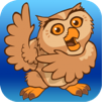By Hariti Patel
Featured Image Provided by University of Michigan [1].
Introduction
Accessibility in modern-day technology is a field that is constantly growing and being improved upon. According to the World Wide Web Consortium, “Accessibility is essential for developers and organizations that want to create high-quality websites and web tools, and not exclude people from using their products and services” [5]. It is crucial to create applications, systems, and websites that cater to a variety of users, including disabled and non-disabled users.
Universal Design vs. Accessibility
Accessibility is often confused with universal design. The concept of universal design connects to the topic of accessibility because both prioritize designing for different types of users [7]. However, while accessibility focuses on catering to users with different kinds of disabilities and their needs, universal design revolves around creating a design that works for everyone [7]. Rather than designing for the typical or average user, universal design strives to make an environment that “can be accessed, understood, and used to the greatest extent possible by all people regardless of their age, size, ability or disability” [7]. It is important to understand that universal design includes accessibility but does not solely focus on that component [7].
Special Education
Special education is tailored to meet the needs of students with identified disabilities [8]. The students are provided with specialized instruction that is specifically designed to meet any unique needs they may have [8]. Along with this, special education provides students with the opportunity to develop to their fullest potential [8]. Some of the disabilities that special education works to address include autism, hearing impairments (including deafness), visual impairments (including blindness), speech or language impairments, and other learning disabilities (including dyslexia, dyscalculia, and dysgraphia) [8].
Learning Styles
For the purposes of this review, three learning styles were identified: visual, auditory, and kinesthetic. Visual learning means learning by seeing [8]. This involves illustrations, videos, graphs, graphic organizers, or other picture aids [8]. Auditory learning is learning by hearing [8]. This can include read-aloud , verbal instructions, or discussions [8]. Finally, kinesthetic learning is defined as learning by doing [8]. This style incorporates any hands-on activities or body movements [8].
Systematic Review Methodology
Focus Questions
In order to understand the accessibility of various special education applications, I began with identifying my central questions: How can apps cater to people with different learning styles and disabilities? What features enable people to learn information in the style of their choice?
Search Methods
To conduct the search, I employed two methods. First, I used the Google search engine and looked up “Accessibility Apps for iPhone” to get a general sense of the kinds of applications the Apple App Store offers. Here, I explored the App Store Story on “Apps for Accessibility” and more specifically, I looked at the “Learning and Literacy” section where I reviewed 10 applications from the list [2]. Second, I went to the Apps section on the Apple App Store on my iPhone and explored the “Special Education” category under the “Education” section. I reviewed a total of 23 apps, but some were repeats from the first method of searching [3].
Criteria for App Selection
I developed criteria to select which apps to review and explore further for their accessibility. I reviewed apps that had at least 500 ratings, at least 2 screenshots provided, a description explaining at least 3 features of the application which also depict at least one of the three learning styles, and had a section for the “10 Most Helpful Reviews” [3].
Application Review
Socratic by Google
Socratic is a free application with 306, 651 ratings [3]. Its key features include videos with step-by-step explanations, study guides created by experts, and ability to use voice and camera to connect to online resources to better understand problems [3]. Socratic addresses all three styles of learning. In terms of its well-addressed accessibility challenges, it supports Dynamic text, large print and screen magnification with Zooms lens view, and can be used with screen readers and specifically Apple’s VoiceOver to run voice or text-based searches [4].
Speech Blubs: Language Therapy
Speech Blubs is a free application that has 9,180 ratings [3]. Its key features include the use of scientifically proven video modeling for effective speech development, voice-activated functionalities, and more than 1500 exercises, activities, videos, and games [3]. It addresses all three styles of learning. Through these features, it helps students with speech delay, autism, down syndrome, and apraxia according to several customer reviews [6].
Speechify Text Reader News PDF
Speechify is a free application that has 37, 148 ratings [3]. It has key features like listening to text as audio, ability to toggle reading speed, and personalization with an interactive reading interface including HD voices and more than 50 supported languages [3]. It addresses the visual and auditory styles of learning. By employing these key features, Speechify makes this application accessible to those with visual or motor impairments and learning disabilities by providing the user with options to customize their experience [3].
The ASL App
The ASL app has 625 ratings and is free to download [3]. For its key features, it has self-paced learning with videos of signers showing each sign, personalization by saving the signs the users want to review, and various video control options to slow down or speed up the videos [3]. It addresses the visual and kinesthetic styles of learning. Based on the features the app provides, it addresses the accessibility challenges for people with hearing impairments well [3].
Voice Dream Reader
Voice Dream Reader has 2,033 ratings and costs $19.99 to download [3]. For its key features, it has text-to-speech with the spoken word being highlighted and a distraction-free mode created with auto scrolling and full screen, numerous different reading styles, and a built-in scanner to allow users to upload various different formats of documents [3]. It addresses all three styles of learning. The app addresses numerous accessibility challenges well including high contrast and large font size for low vision users and has VoiceOver and Braille functionalities for users with visual, motor, or hearing impairments [3].
Proloquo2Go
Proloquo2Go is the most expensive app of this study with a price of $249.99 and has 5,368 ratings [3]. The key features are allowing users to learn and grow their vocabulary with an Augmentative and Alternative Communication (AAC) system, easy editing capabilities to add new words with symbols, and type and speak functionalities [3]. It addresses all three of the styles of learning. In terms of its well-addressed accessibility challenges, Proloquo2Go offers 23 accessibility settings to support switch scanning and Apple’s VoiceOver screen reader and offers Dynamic text to help those with motor, vision, and hearing impairments [3].
| Application | Cost | Ratings | Styles of Learning | Key Features | Well-addressed Accessibility Challenges |
Socratic by Google  | Free | 306, 651 | Auditory, visual, kinesthetic | – Videos with step-by-step explanations – Study guides created by experts – Ability to use voice and camera to connect to online resources to better understand problems | – Supports Dynamic text, large print and screen magnification with Zooms lens view – Can be used with screen readers and Apple’s VoiceOver to run voice or text-based searches |
Speech Blubs: Language Therapy  | Free | 9, 180 | Auditory, visual, kinesthetic | – Use of scientifically proven video modeling for effective speech development – Voice-activated functionalities – More than 1500 exercises, activities, videos, and games | – Helps students with speech delay, autism, down syndrome, and apraxia |
Speechify Text Reader News PDF  | Free | 37, 148 | Auditory, visual | – Listening to text as audio – Ability to toggle reading speed – Personalization with an interactive reading interface including HD voices and more than 50 supported languages | – Provides options to customize experience for users with visual or motor impairments and learning disabilities |
The ASL App  | Free | 625 | Visual | – Self-paced learning with videos of signers showing each sign – Personalization by saving the signs the users want to review – Various video control options to slow down or speed up the videos | – Videos and controls help users with hearing impairments |
Voice Dream Reader  | $19.99 | 2,033 | Auditory, visual, kinesthetic | – Text-to-speech with the spoken word being highlighted and a distraction-free mode created with auto scrolling and full screen – Numerous different reading styles – Built-in scanner to allow users to upload various different formats of documents | – High contrast and large font size for low vision users – VoiceOver and Braille functionalities for users with visual, motor, or hearing impairments |
Proloquo2Go  | $249.99 | 5, 368 | Auditory, visual, kinesthetic | – Learn and grow user’s vocabulary with AAC system – Easy editing capabilities to add new words with symbols – Type and speak functionalities | – 23 accessibility settings to support switch scanning and Apple’s VoiceOver screen reader – Dynamic text to help those with motor, vision, and hearing impairments |
Main Takeaways
Out of the six apps that were analyzed, many of them addressed different accessibility challenges for a variety of users. These apps can be very useful in special education because they develop interfaces that can help users with disabilities learn in a frustration-free way. Based on the key features and each app’s well-addressed accessibility challenges as shown in Figure 1, a user can determine which app would best fit their needs.
To connect the well-addressed accessibility challenges to the three learning styles, it is important to analyze the data gathered from this systematic review. For visual learners, it was evident that videos enabled learning through peer observations. Additionally, it benefitted students who may dislike repeating themselves or practicing sounds. For auditory learners, being able to toggle reading speed and adjusting it as needed has significantly improved reading speeds. Furthermore, the text-to-speech capabilities were shown to be very effective because they allow the text to be read out loud in a pace and voice specified by the user. Finally, for kinesthetic learners, the interactive games, images, and reading interfaces were able to maintain the attention of the users and make their learning experiences more enjoyable.
While these six apps are serving a wide audience and dealing with accessibility challenges, it is important to note that there is still room for improvement. For many of the text-to-speech applications, reviews mentioned that the naturalness of the computer voices can be improved upon [3]. Robotic voices can sound monotonous and in turn, cause students to be less engaged with the content [3]. Additionally, some of these apps should cater to bilingual students with disabilities and provide speech support for them as well [3]. Overall, these applications are very beneficial for many users, including those with and without disabilities, and can explore opportunities to make their products even more accessible.
Works Cited
[1] “10 Helpful Text-to-Speech Readers for Back to School,” Dyslexia Help at the University of Michigan. Retrieved January 28, 2021, from http://dyslexiahelp.umich.edu/tools/software-assistive-technology/text-to-speech-readers.
[2] “Apps for Accessibility : App Store Story.” Retrieved January 28, 2021, from https://apps.apple.com/us/story/id1266441335
[3] “App Store,” Apple. Retrieved January 28, 2021, from https://www.apple.com/app-store/.
[4] D. Brauner, “Socratic App Accessibility Review,” Perkins eLearning, Retrieved January 28, 2021, from https://www.perkinselearning.org/technology/blog/socratic-app-accessibility-review.
[5] S. L. Henry, “Accessibility,” W3C. Retrieved January 28, 2021, from https://www.w3.org/standards/webdesign/accessibility.html.
[6] “Speech Learning App for Kids / Speech Blubs,” Speech Blubs, 18-Jan-2021. Retrieved January 28, 2021, from https://speechblubs.com/.
[7] “Universal Design and Accessibility,” University of Kansas Medical Center. Retrieved January 28, 2021, from http://www.kumc.edu/information-resources/teaching-and-learning-technologies/universal-design-and-accessibility.html.
[8] “What is Special Education?” Retrieved January 28, 2021, from https://www.masters-in-special-education.com/what-is-special-education-2/


